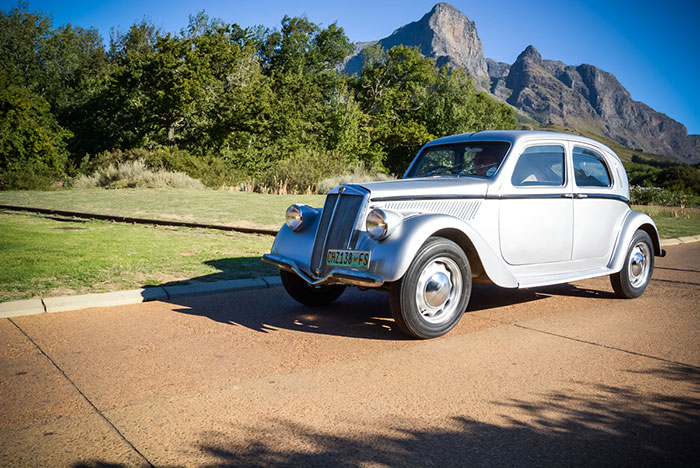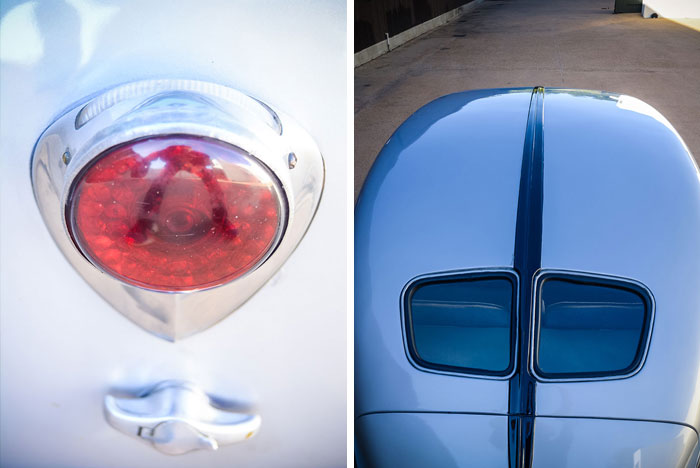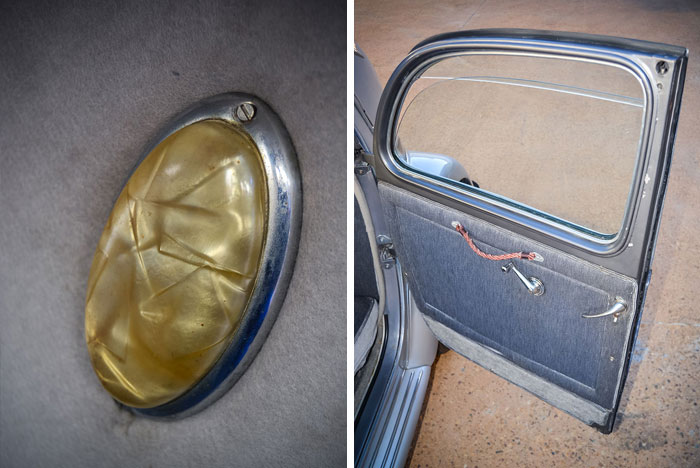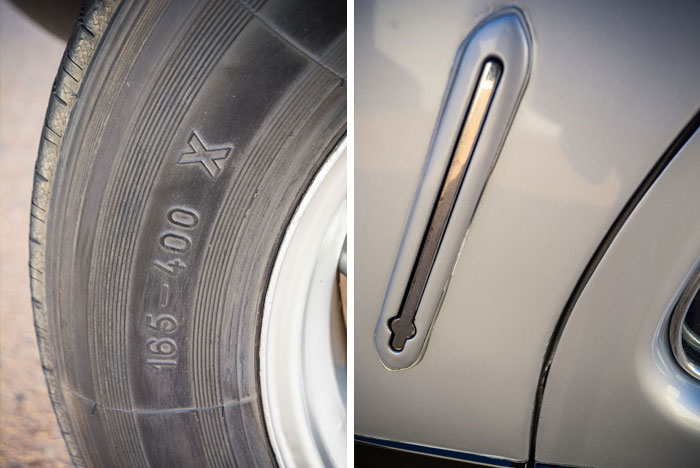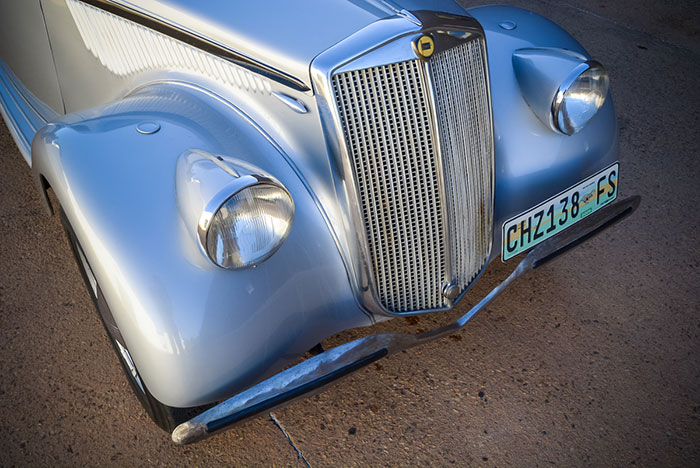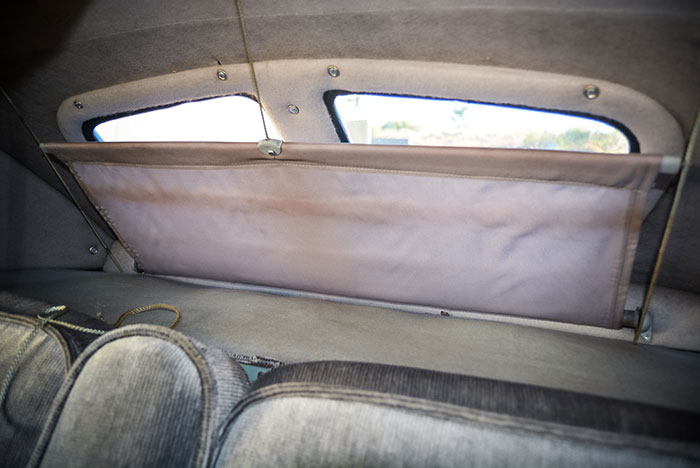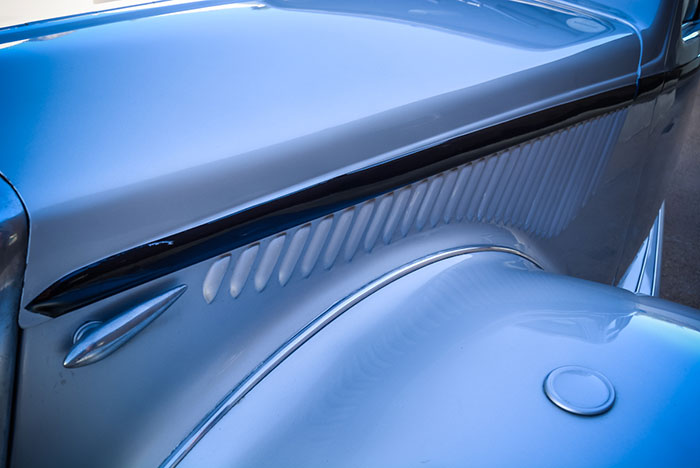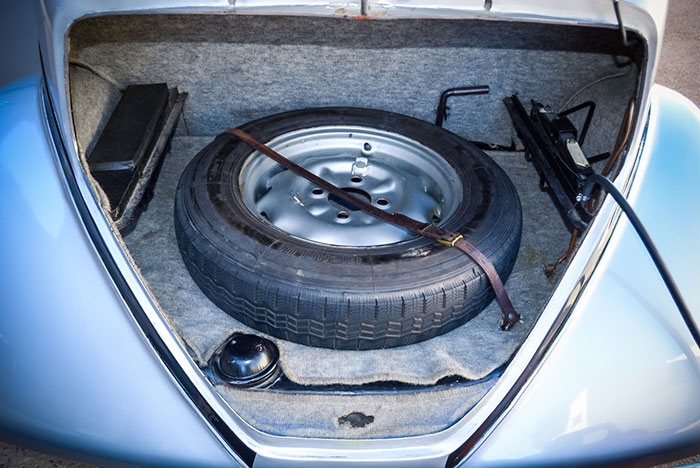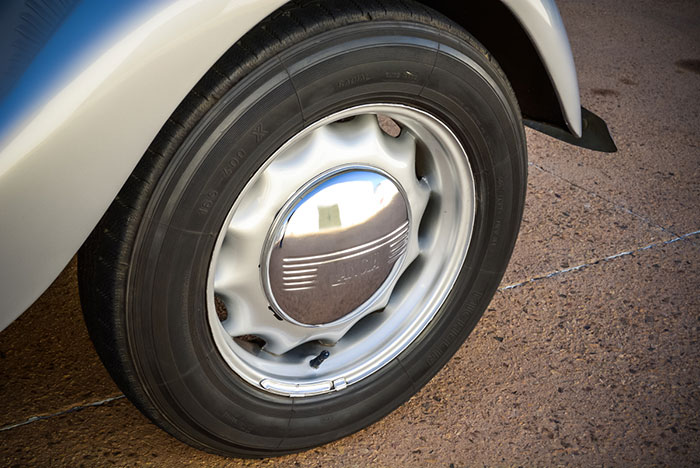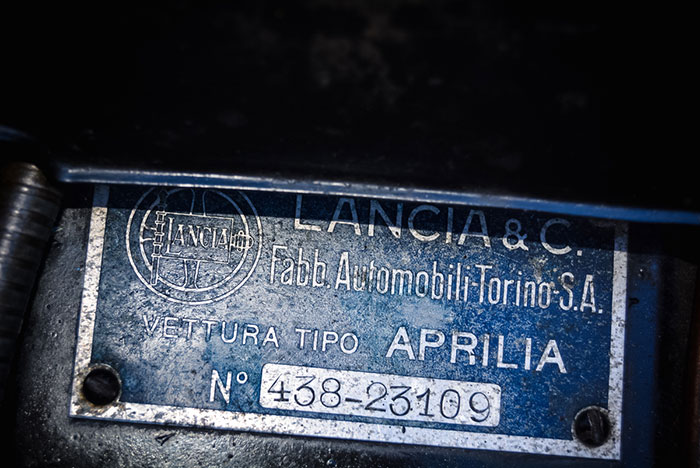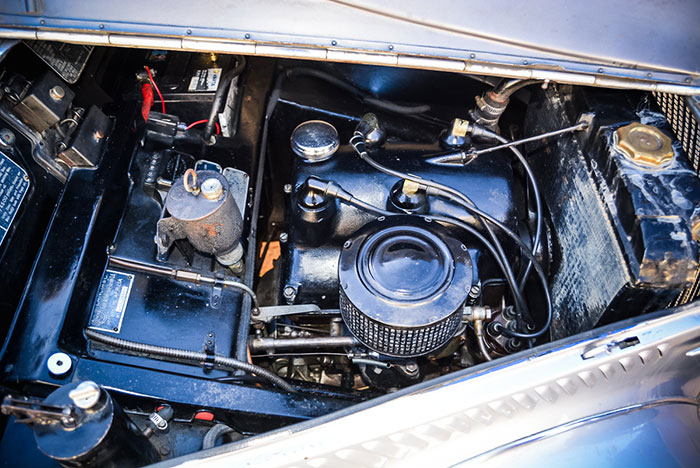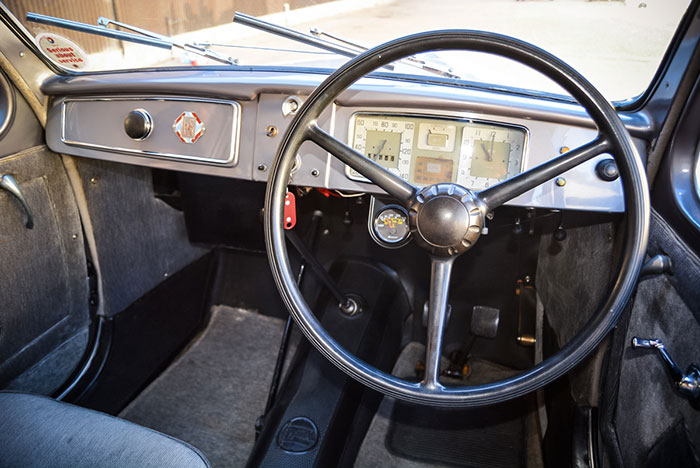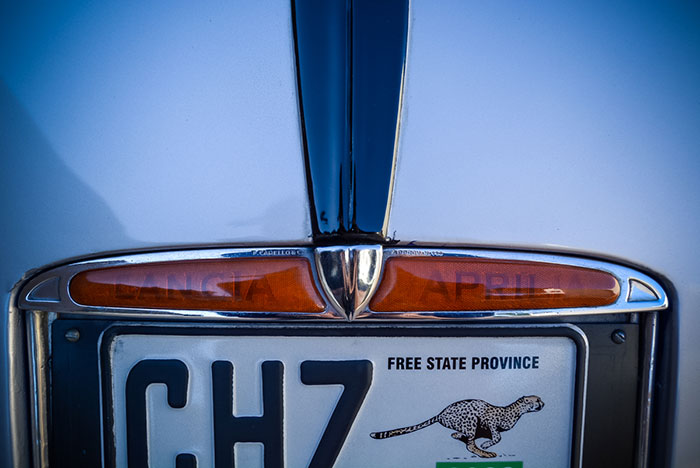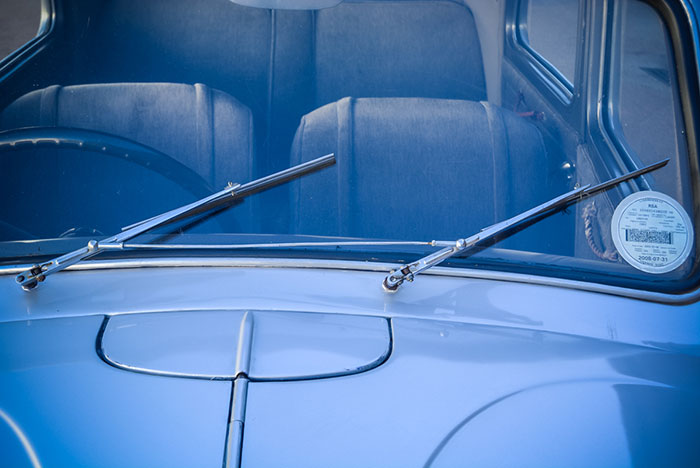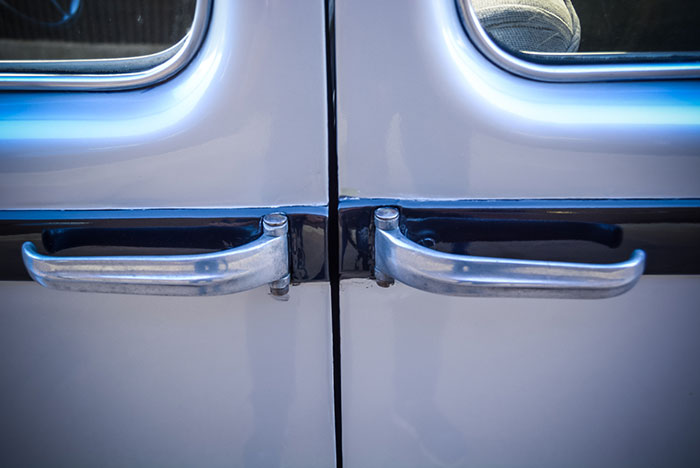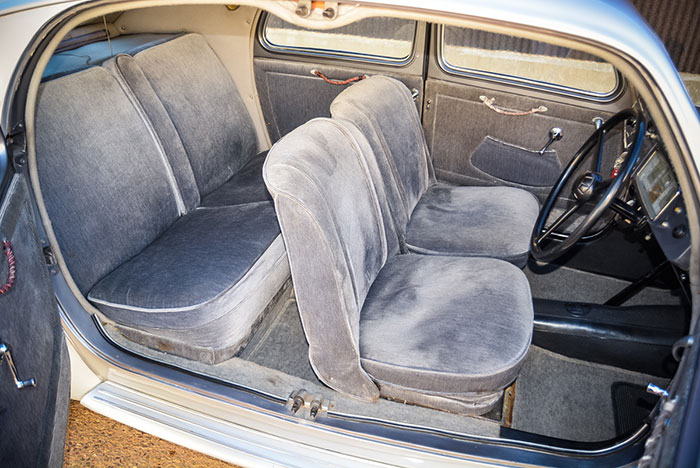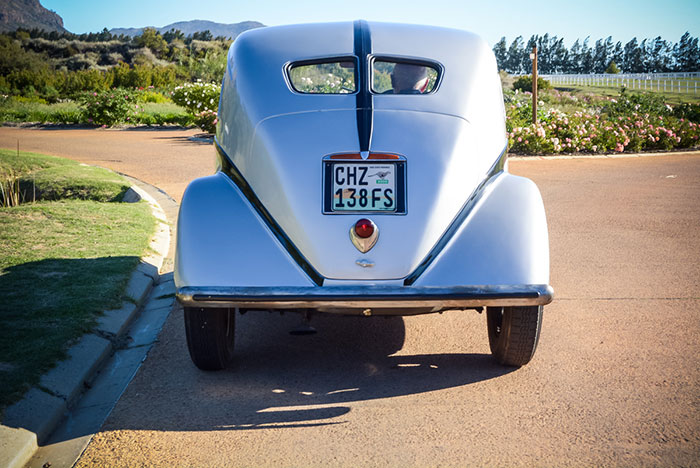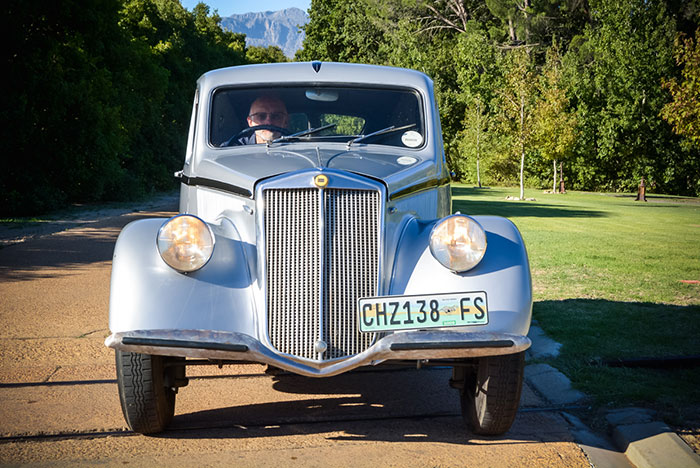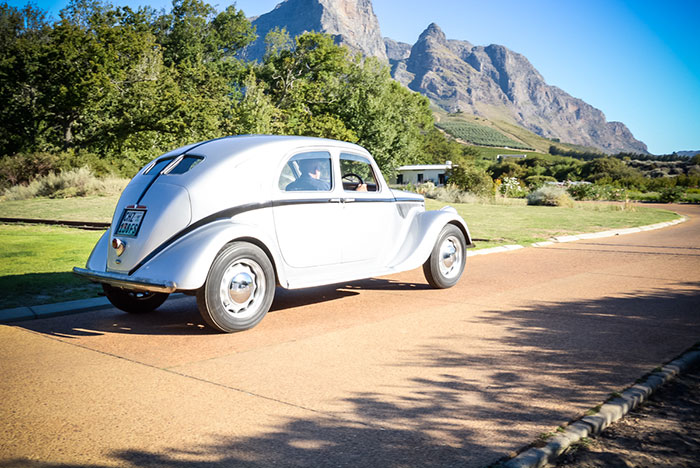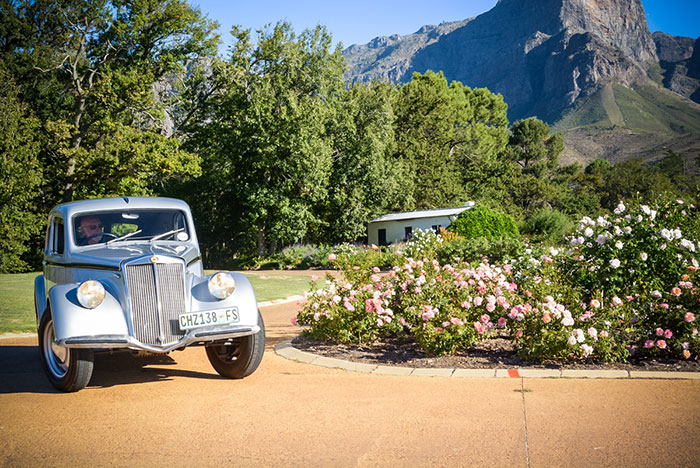
23 Apr Collection in action: Lancia Aprilia
The story behind Lancia’s pre- and post-war sophisticated saloon, the Aprilia, which turned out to be one of motoring life’s little surprises.
Lancia was founded on 29 November 1906 by Vincenzo Lancia, an Italian pilot and engineer, and Claudio Fogolin. Vincenzo’s career began as an apprentice to a bicycle importer but by the time he was 19 years of age, he had become a chief inspector, test driver and racing driver for Fiat. In 1900 he befriended Count Carlo Biscaretti di Ruffia, who was later credited with the design of the Lancia logo. Vincenzo set up Lancia & Co Fabbrica Automobili with Fogolin, who came from a wealthy family and was a fellow Fiat employee and racer. He was appointed as commercial director. The first Lancia, the Tipo 51 (later called Alfa) was built in 1907 with a four-cylinder engine producing 21 kW. From this ambitious start, the Lancia company grew to become one of the more charismatic, if not mysterious, Italian marques, with an early history of style and innovation.
Noted for its extensive use of letters of the Greek alphabet for its model names, the 1913 Theta was the first European production car to feature a complete electrical system as standard equipment. The 1922 Lambda was one of the world’s first monocoque designs and also featured ‘sliding pillar’ independent front suspension that incorporated the spring and hydraulic damper into a single unit – Lancia adopted independent springing in an era where live axles front and rear were still commonplace. Later, rear transaxles were first used on the Aurelia and Flaminia models. The 1948 Ardea offered the first five-speed gearbox to be fitted to a production car, while the 1950 Aurelia premiered the first full-production V6 engine. Lancia was also the first manufacturer to produce a V4 engine, a narrow-angle design that appeared in 1922. The benefit of such a design is that a single cylinder head can be adopted.
The Aprilia was one of the few cars that appeared prior to WW2 and revived afterwards without much change and without being outdated, a tribute to its original design and specification. It was one of the first cars to be designed using a wind tunnel, an exercise Lancia carried out in collaboration with Battista Farina and the Politecnico di Torino. The berlinetta aerodynamica achieved an impressive drag coefficient for the time of 0,47, although the similarly-shaped 1936 Tatra T97 boasted an even more impressive Cd of just 0,36. (FMM’s Tatra was featured in the August 2016 FMM Newsletter.)
Apart from a ridge running from above the windscreen along the roof and down to the rear number plate housing, one of the Aprilia’s other distinguishing is its pillarless body design with doors that swing open to reveal a comfortable, cosy yet spacious, five-seat cabin. Robust latches in the sills and roof rails ensured the body’s rigidity when the doors were closed. Yet despite the necessity to build strength into the body structure to avoid flex and shake, the Aprilia’s kerb weight was only 900 kg. Lancia really did know what he was doing…
Known as Model 238, production began in February 1937 but, sadly, Vincenzo was not to witness the success of his design. He died of a heart attack in the same month – February 15 – aged just 55 years, leaving his wife, Adele Miglietti Lancia, and his son, Gianni Lancia, to take over control of the company.
Initially, under the bonnet of the Aprilia – only the tops and not the sides open up to gain access to the engine bay – was a narrow-angle, 1 352 cm3 V4 fed by a single Zenith carburettor and producing 35 kW at 4 000 r/min and 95 N.m of torque at 2 000. It was mated with a four-speed gearbox. This powertrain remained unchanged until the outbreak of WW2. When second series Aprilia production resumed in 1946 as the Model 438, the engine had been increased in capacity to 1 486 cm3. Power was up to 36 kW at 4 300 r/min, and torque raised to an even 100 N.m at 2 000.
The Franschhoek Motor Museum obtained this 1947 Aprilia from the Waldie Greyvensteyn collection. Its striking silver paintwork is not original – it was previously blue and the interior has been re-upholstered in modern velour, but these upgrades have, if anything, enhanced the car’s appeal. Open the doors and the interior immediately exudes a feeling of well-being. Turn the key, press it in, then reach under the dashboard for a large black lever, pull it and the engine spins into life with a momentary crackle and pop.
Pedals are well spaced and the typically long gear lever moves through the gate with surprisingly little loose play. Once warmed up, the engine sounds quite vibrant in the lower gears and pulls with sporty eagerness. The large, three-spoke steering wheel is fairly heavy to twirl when manoeuvring due to there being only a couple of turns lock-to-lock. As a result, when combined with the all-independent suspension, ride and handling is very stable. Visibility to the front and sides is excellent; the door windows all have those neat pelmets of glass that allow for opening the window a tad for ventilation without creating wind noise. But the VW Beetle and Tatra-like split rear window offers very little view behind through the dash-top mirror: it even has a retractable blind that, together with the absence of rear side windows, can make the rear compartment very cocooning. Ornate lights in the rear quarter panels add a touch of class.
Top speed was quoted by the factory at 78 mph (126 km/h) with an estimated 0-60 mph time of 22,3 seconds and 0-100 km/h in 24,6 seconds. Other estimates suggest a fuel consumption of 9,1 litres/100 km. But figures cannot describe the driving experience, and the Aprilia is one of those ‘grin’ cars – a spacious saloon that oozes character and enjoyment.
Sales of the first series Aprilia reached 10 354 units in the lead up to WW2 in 1939. When peace was restored, production as the second series resumed in 1946 and lasted for 10 years with sales totalling 9 728. However, a Model 486 Lusso was offered as well as a Lungo (lengthened) version – 706 made. A grand total of 20 082 cars and 7 554 additional chassis for coachbuilt bodies were produced in Turin, along with approximately 700 units assembled in France.
Lancia’s quest for innovation and quality combined with unorthodox construction techniques, little commonality between models and progressively tired and outdated production machinery meant that manufacturing costs escalated. Sadly, sales did not rise in harmony. An obvious end was in sight when in October 1969 Fiat took over the ailing company, and for a while the tide seemed to have turned. Some remarkable success in world rallying put Lancia back in headline news while collaborations with Saab, Alfa Romeo, Fiat and Chrysler products helped keep the company viable. But all to no avail – today, as part of Fiat Chrysler Automobiles, Lancias are not sold outside of Italy and only one model is on offer, the Ypsilon. Supermini.
Yet another tale of a brand that once was on top of the game but has sadly declined almost to extinction. As always though, it is a pleasure to be able to drive examples of the good times, and the Aprilia is a fine example of what Lancia was all about – a car for the masses with a touch of sophistication.
